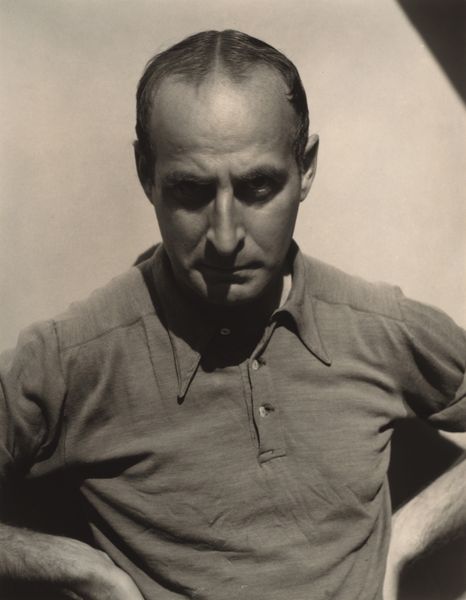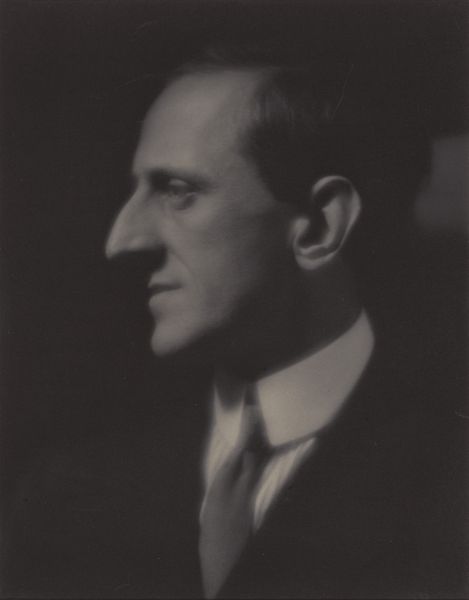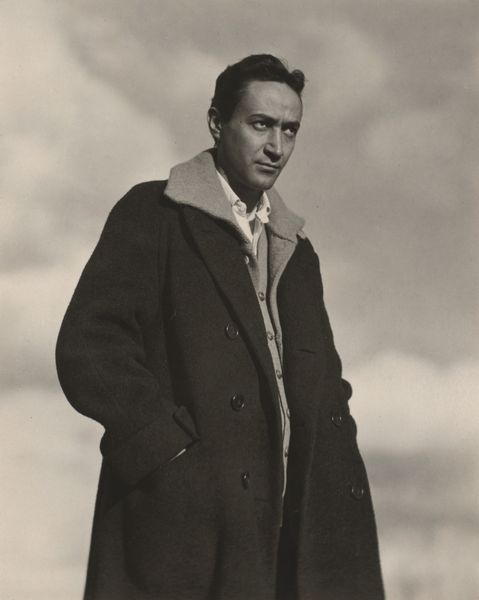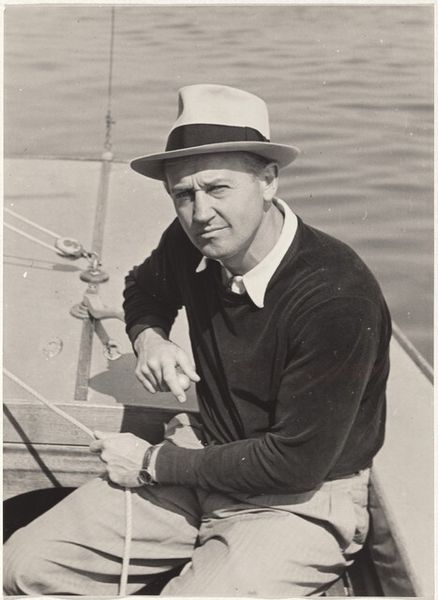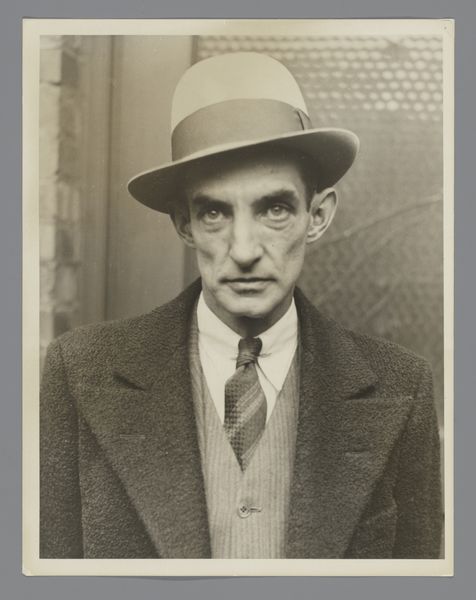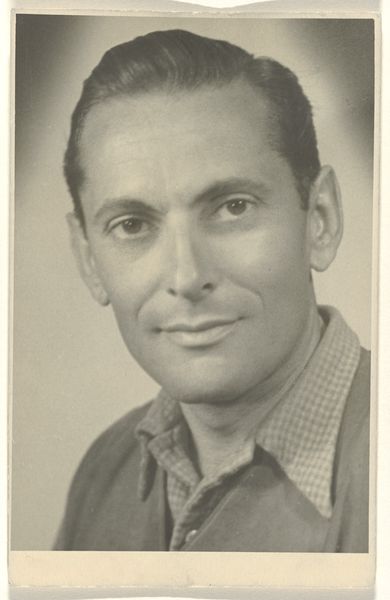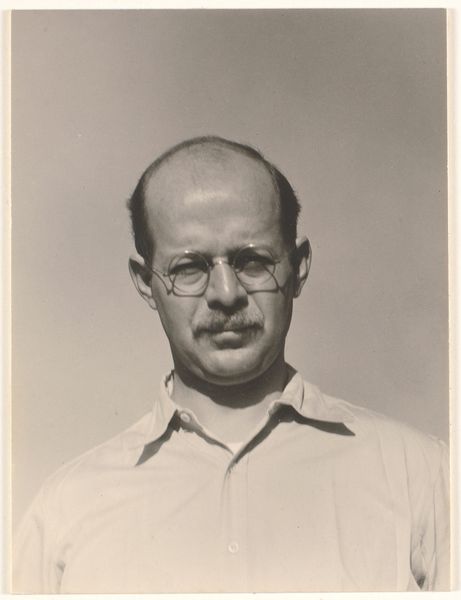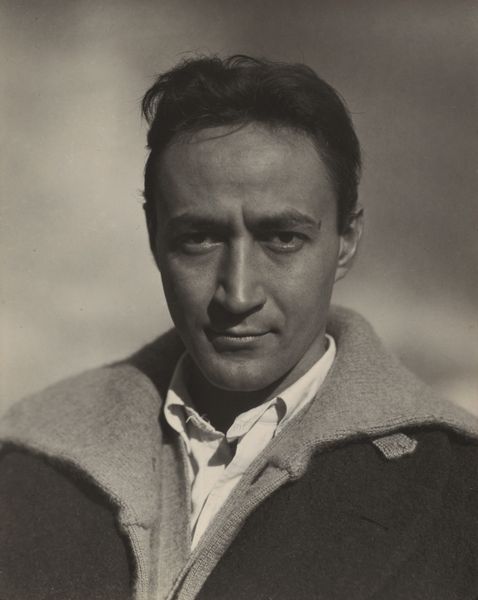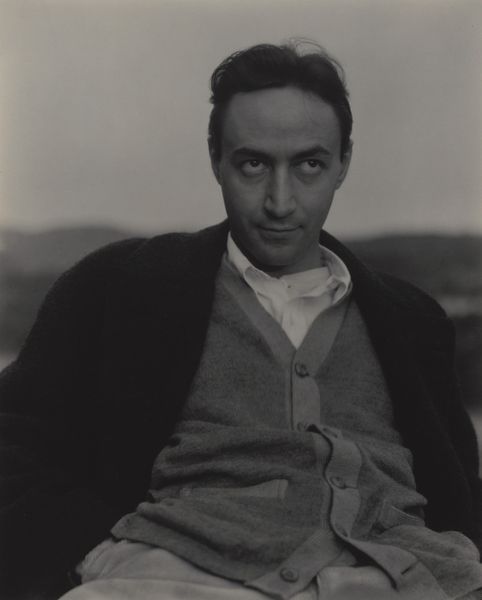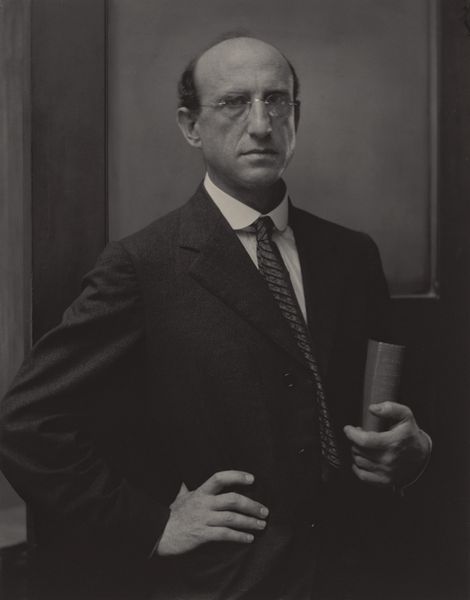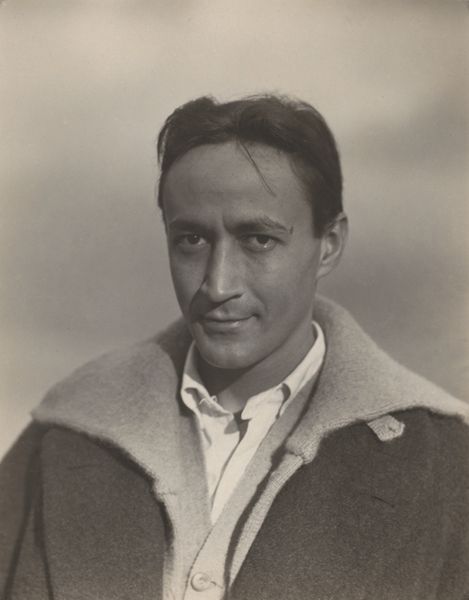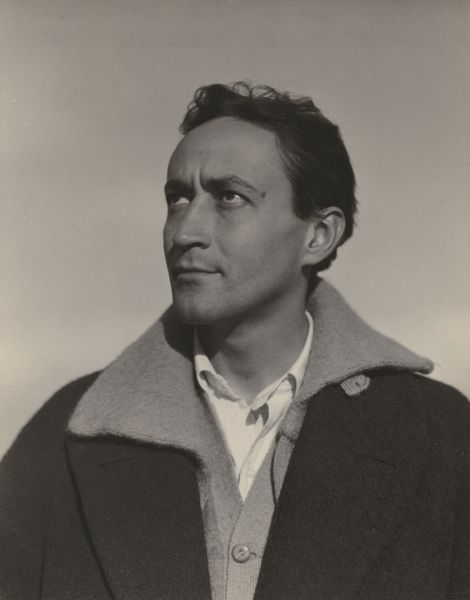
photography
#
portrait
#
photo restoration
#
low key portrait
#
portrait image
#
portrait
#
portrait subject
#
photography
#
historical photography
#
portrait reference
#
single portrait
#
photographic element
#
modernism
#
celebrity portrait
Dimensions: sheet (trimmed to image): 22.3 × 17.9 cm (8 3/4 × 7 1/16 in.) mount: 53.7 × 39.6 cm (21 1/8 × 15 9/16 in.)
Copyright: National Gallery of Art: CC0 1.0
Editor: So, this is Alfred Stieglitz’s "Louis Kalonyme" from 1932, a black and white photograph. The subject's direct gaze is really striking. What narratives do you find present in this portrait? Curator: It's important to consider Stieglitz's relationship to the modernist project. The straightforward gaze could reflect the modernist desire for truth and clarity, a rejection of Romantic idealism, but truth for whom, and at what cost? Think about the context of 1932 – the Depression era. How does the starkness of the portrait speak to or perhaps avoid, the socioeconomic realities of the time? Editor: I see what you mean. It's interesting to consider the context alongside the image. I was just focused on the artistic elements, but how might Kalonyme, as the subject, be participating in the creation of the photograph's meaning? Curator: Exactly! The power dynamic inherent in the artist-subject relationship is always critical. Kalonyme’s posture, his clothing... they aren’t accidental. What could his pose communicate about his social position, his sense of self, and the identity he wishes to convey to the world during this time? Does it echo similar portraits or does it make a statement? Editor: I hadn't thought about that. I suppose I was thinking of the artist and artwork separated from their place in time, like it exists in a vacuum. This makes me think about art very differently, as a kind of conversation. Curator: Precisely! And whose voices are included in that conversation and whose are missing? Keep asking those questions. They're fundamental to understanding art's role in shaping our perceptions and identities. Editor: This has given me a new lens for viewing art and a new level of curiosity about each work’s narrative. Thank you. Curator: It's about seeing beyond the surface, understanding the complex layers of history, power, and representation that shape our visual world. A continued analysis enriches the experience.
Comments
No comments
Be the first to comment and join the conversation on the ultimate creative platform.
